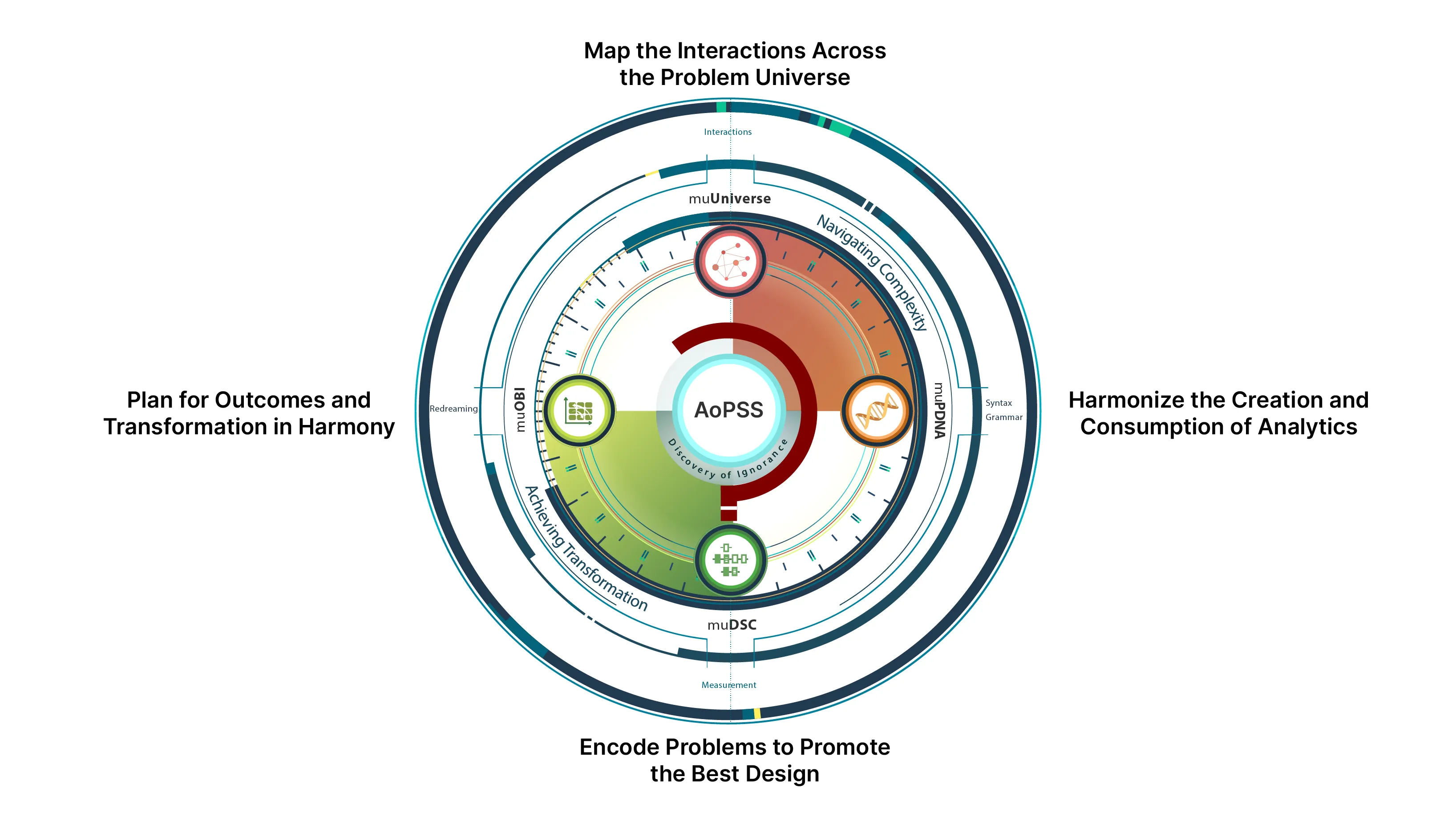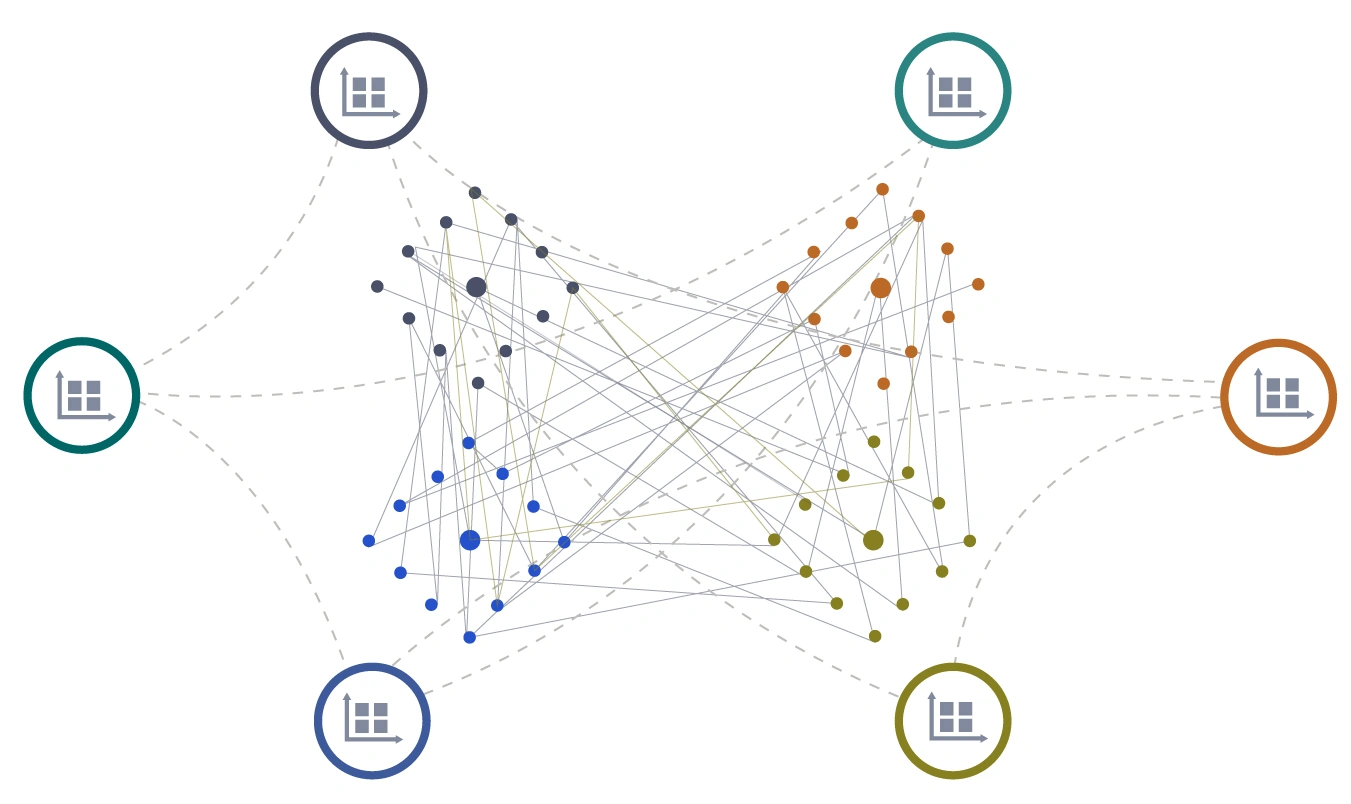At Mu Sigma, we know that what is true today will not be true tomorrow. As change continues to accelerate, it creates more complexity and an influx of data for our businesses in shorter cycles. Complexity gives rise to muddy, ill-defined, and interconnected problems.
What businesses need to first develop is an understanding of the problem space in which they operate and the interactions between the problems.
The Art of Problem Solving System™ (AoPSS) is a system comprised of a series of habits, artifacts, and software – each of which must be continuously sharpened, and applied daily to your problem-solving work. Businesses will require a ‘man machine’ ecosystem – a truly integrated blend of math, business, and technology.
Learn to Capitalize on Change using the new Art of Problem Solving System™ (AoPSS) Framework
Mu Sigma’s Art of Problem Solving System™, with its three guiding principles of Learning over Knowing, Extreme Experimentation and Interdisciplinary Perspective, enables organizations to adopt a more holistic approach to problem definition and problem-solving. It is designed to not only match today’s incredibly fast-changing business environment, but to help firms benefit from it.
If followed closely, AoPS provides businesses with the impetus to move beyond just mitigating the risks of change, to actually taking advantage of those risks. AoPS encompasses four habits and an underlying platform for decision sciences, which provide structured problem solving and insight generation approaches supported by guided, white-box analytics.
Mu Sigma artifact: muOBI
Plan for Outcomes and Transformation in Harmony – The first habit helps establish clarity of purpose with all stakeholders in the problem-solving process and charts a course toward realizing measurable outcomes and transformative change.
Mu Sigma artifact: muUniverse
Map the Interactions Across the Problem Universe – Too often, analytics professionals get locked into a particular problem, seeing only their piece of the puzzle at a particular point in time. But business problems are always interconnected. In the problem definition process, one must look at the first order relationships that a business problem has with other problems.
Mu Sigma artifact: muPDNA
Encode Problems to Promote the Best Design – The dynamic nature of businesses forces organizations to solve multiple problems on a daily basis. These problems start off as muddy or fuzzy before becoming clearer, forcing analytics groups to feel their way through the smoke in order to define, articulate and solve business problems the right way. Ensuring that organizations can define problems in a consistent and structured manner is key. A common language is required. Asking the right questions is also key in this step. Traditional education and corporate performance systems test us on the ability to find answers, not on the questions we asked on the way to the answer. In a world of increasing change, questions are more important than answers.
Mu Sigma artifact: muDSC
Harmonize the Creation and Consumption of Analytics – In a world where data is the “new oil,” organizations must manage the decision supply chain with the same rigor and discipline that their compatriots in manufacturing do with physical chains. Too often, there’s a bias toward just creating analytics but you need to retrieve raw materials (data), respond to demand fluctuations, distribute insights across the organization, and all while seeking to continuously improve the flow of the chain. The goal is better decisions, faster.
The purpose of our Art of Problem Solving system™ is to instill large enterprises with a new approach to decision making. It is designed to not only match today’s incredibly fast-changing business environment but to help businesses benefit from complexity.
Learn more about capitalizing on change and solving today’s complex business problems using the new Art of Problem Solving System™.



